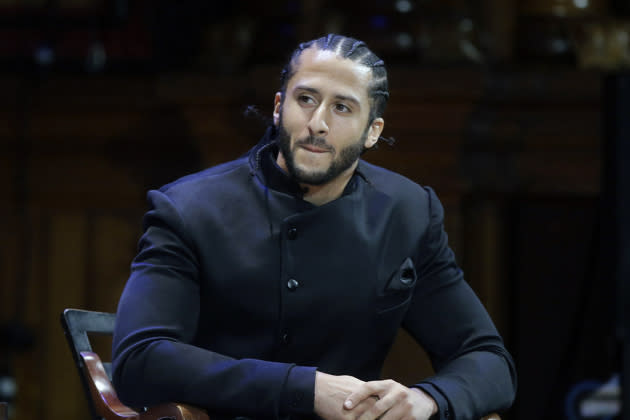Athlete Sponsors of SPACs Bring Limited Value in Crowded Market but Can ‘Make Sense’ in Specific Cases

Alex Rodriguez, Shaquille O’Neal and Colin Kaepernick are among a growing list of athletes to attach their names to special purpose acquisition companies (SPACs). While all three have undeniably enjoyed success off the field (Rodriguez and O’Neal as investors and broadcasters, Kaepernick as a social justice activist), opinions differ on the value they bring as SPAC sponsors. Those who value having athletes on the sponsorship team point to the name recognition they provide (helpful for attracting investors) and the doors they can open (useful in seeking an acquisition target). Detractors, meanwhile, cite the current sellers’ market conditions and the relative lack of strategic synergies athletes bring. Rick Perna (managing director, Greenwich Advisory & Company) falls somewhere in the middle. “If you’re looking to deploy capital in a competitive situation [as SPACs are right now], then it certainly could limit the benefit of having an athlete or influencer as part of your group,” Perna said. “If you have the right influencer, the right brand and you acquire the right assets, [having an athlete on board] could absolutely help expand reach and target audience and scale a potential product. There are specific cases where [an athlete sponsor] can make sense.”
Our Take: Professional athletes are joining SPAC sponsorship teams because there is money to be made. As Julian Klymochko (CEO, Accelerate Financial Technologies) recently wrote, the publicly traded investment vehicles have become “one of the greatest fee generators that asset management has ever seen.” The current $113 billion SPAC market includes $23 billion in sponsor compensation.
IPO investors have been willing to back athlete-led SPACs because there is little downside to doing so. The SPAC IPO unit is as near “risk-free” as an investor can get—with or without a celebrity sponsor present. Units are typically sold at $10 with a warrant attached. That warrant has value. And at the end of the day, SPAC IPO investors may be able to sell the stock for more than $10 in this incredibly strong market or redeem it for $10 in connection with a business combination. All the while, the IPO investor can retain the warrant and still have some upside. SPAC IPO units can be a great alternative to cash. For informational purposes, if a secondary investor buys the stock without a warrant, such an investor wouldn’t have the warrant upside. And if an investor buys the stock for more than $10, such an investor would have a loss on redemption. Likewise, PIPE (private investment in public equity) investors do not receive warrants or enjoy a redemption feature.
Considering the minimal downside risk, it shouldn’t be a question of if a given sponsorship group can get its SPAC public (there’s going to be interest). The question is once the athlete-led blank check company is publicly traded, can they complete a business combination at a price that is good for shareholders. “There’s an extraordinary amount of interest, liquidity and capital in the marketplace right now chasing fewer assets than are available for acquisition,” Perna said. “Invariably, when you have so much demand and so little supply it is going to puff up prices. It’s just the laws of economics.”
That doesn’t mean it’s going to be impossible for SPACs to find sports and entertainment acquisition targets at attractive valuations. As Rob Striar (CEO, Bull Horn Holdings) noted, each SPAC is “shopping in a slightly different area based off of their management teams, operational teams and scope.” But it does make it more difficult and increases the likelihood the most desirable companies will look for value beyond the capital the SPAC brings (since there is so much of it available). Sure, if all the company wants is money, it doesn’t matter who the SPAC’s sponsors are. But if they want to take advantage of the sponsors’ capabilities—or they don’t want the sponsor to interfere in their business—then it matters (which is why SPACs are adding celebrities in a crowded marketplace to begin with). While all three athletes referenced have aligned with individuals with both the public company and operational experience sought by prospective takeover targets, it’s not clear that their respective groups hold a competitive advantage in the marketplace.
If market conditions have made SPAC IPOs “risk-free” (should interest rates rise, the risk increases), it’s reasonable to assume there would be an appetite for these sports and entertainment focused IPO units with or without athlete involvement. And if that’s the case, it’s fair to wonder how athlete sponsors are carrying their weight beyond the capital and name recognition they bring. Striar said in his SPAC’s case, the athlete—Baron Davis—has brought value as “a savvy and known investor. Being out on the West Coast, [Davis] has access, in some cases, to certain deal flow that is unique.” Remember, SPACs have a limited period to make an acquisition before they have to return the investment capital (no longer than three years). So having someone who can open doors helps. For what it’s worth, since 2010 just 10 of 361 SPACs have liquidated without a deal.
On the surface, Kaepernick participating in an ESG focused SPAC makes sense. The former 49ers QB has built a reputation as a social governance leader, and Mission Advancement Corp. is raising $250 million to “acquire and advance a company with the aim of creating meaningful financial and societal value.” Ultimately, it will come down to the company the SPAC acquires and Kaepernick’s involvement. But it’s not difficult to envision fans of his making an emotional investment to support the company.
More from Sportico.com
